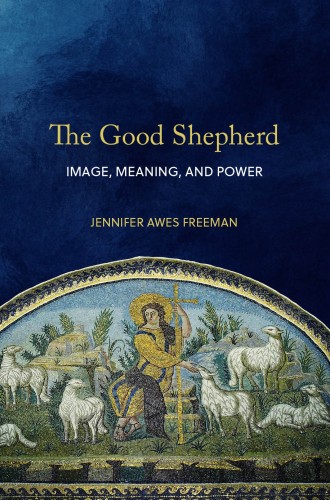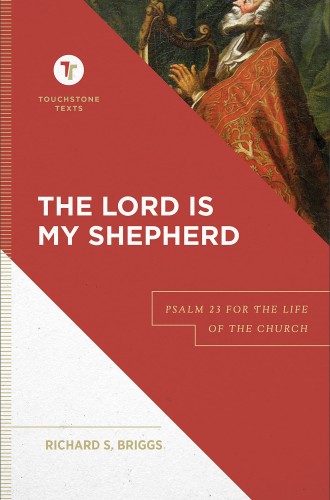The Precious Moments website advertises a popular Easter collectible that features a young girl with teardrop eyes, dressed in a white lamb costume, clasping a shepherd’s staff, and gazing up lovingly at Jesus. Similarly, prints of Warner Sallman’s placid, lily-white painting The Lord Is My Shepherd still sell well on the internet. Such kitsch, Jennifer Awes Freeman notes, seems a far cry from the Babylonian stele, featured at the Louvre, which depicts the lawgiver, military hero, and ruler Hammurabi (c. 1810–1750 BCE) as “shepherd of the people, whose deeds are pleasing to the goddess Ishtar.”
Centuries of sentimentality have cloaked the potency of an icon whose roots stretch back five millennia. In a masterful historical study, Freeman, who teaches theology at United Theological Seminary of the Twin Cities, traces the career of the good shepherd motif through pottery, funerary art, sacred texts, treatises, and church mosaics in a narrative span that ranges from ancient Akkadians in the Near East to the Christian Middle Ages in Europe. This bucolic figure, she shows, has been used by priests, prelates, and kings to inscribe and legitimize their power—even when such elites had very little direct contact with actual living shepherds.
Even critical scholarship, she argues, has been ignorant of the multivalent, supple versatility of the shepherd icon. This is especially true of historians, who contrast too cleanly an early pacifist church with the post-Constantinian religion of establishment.






